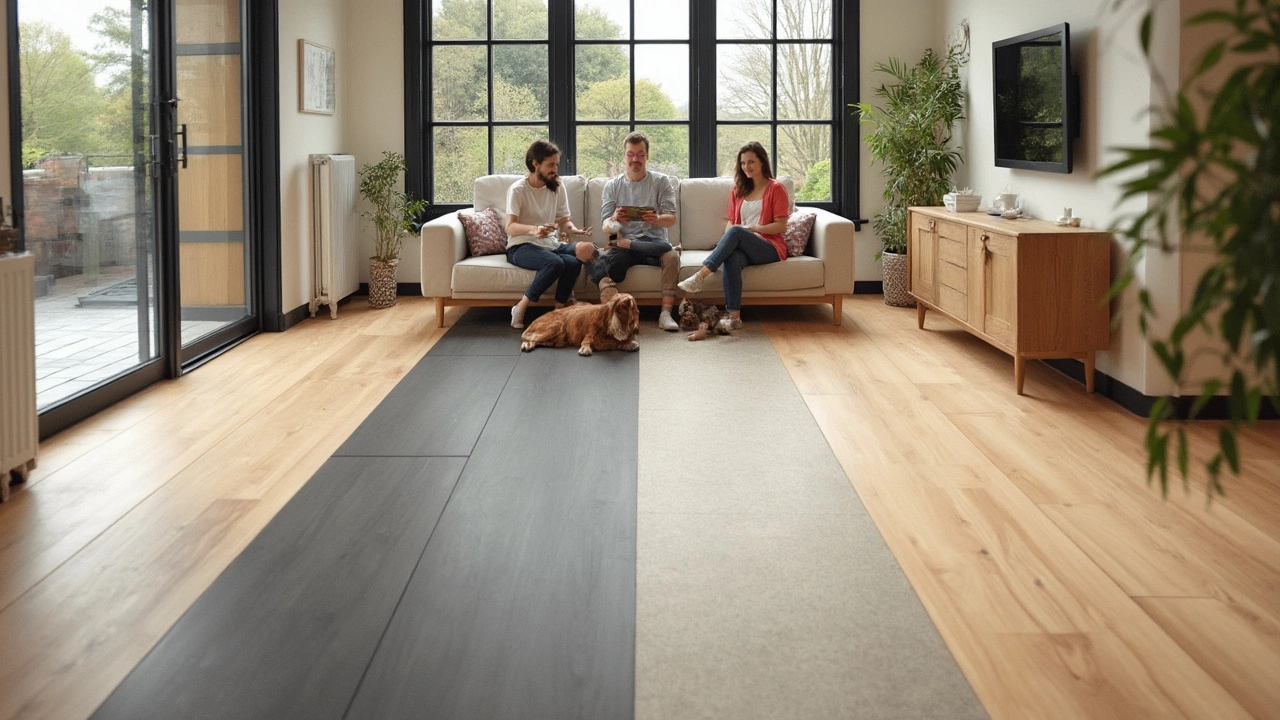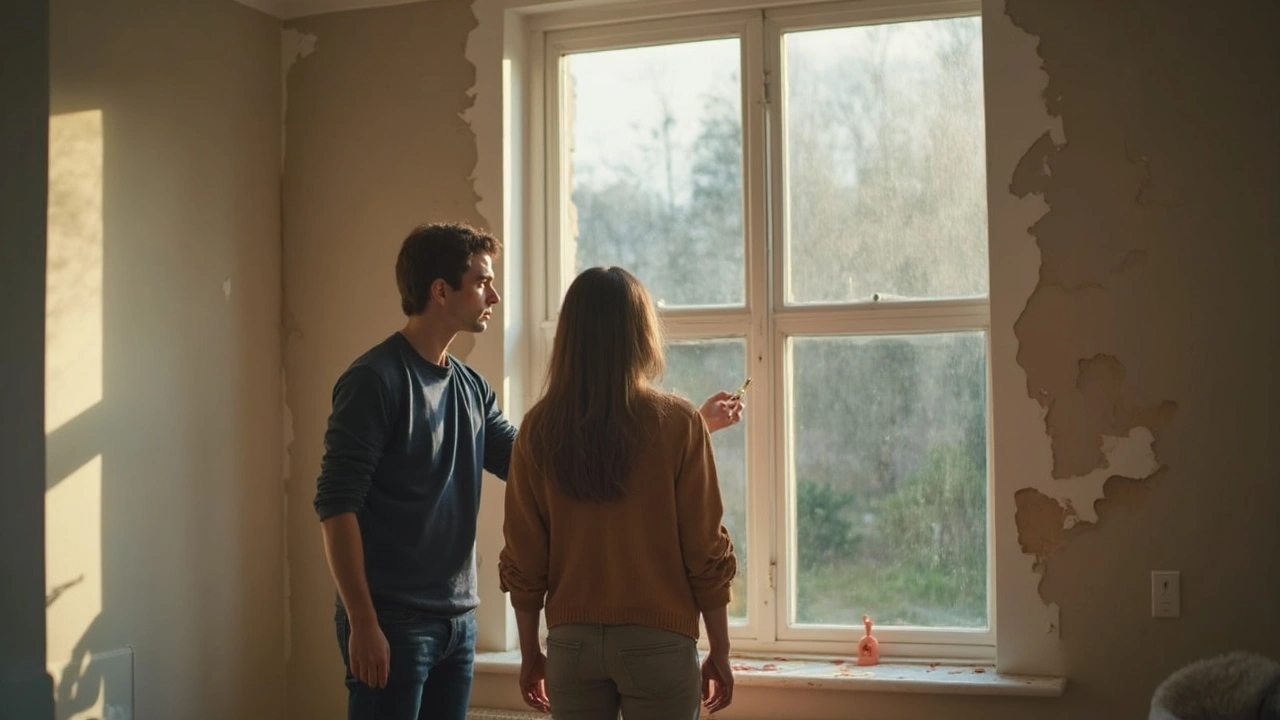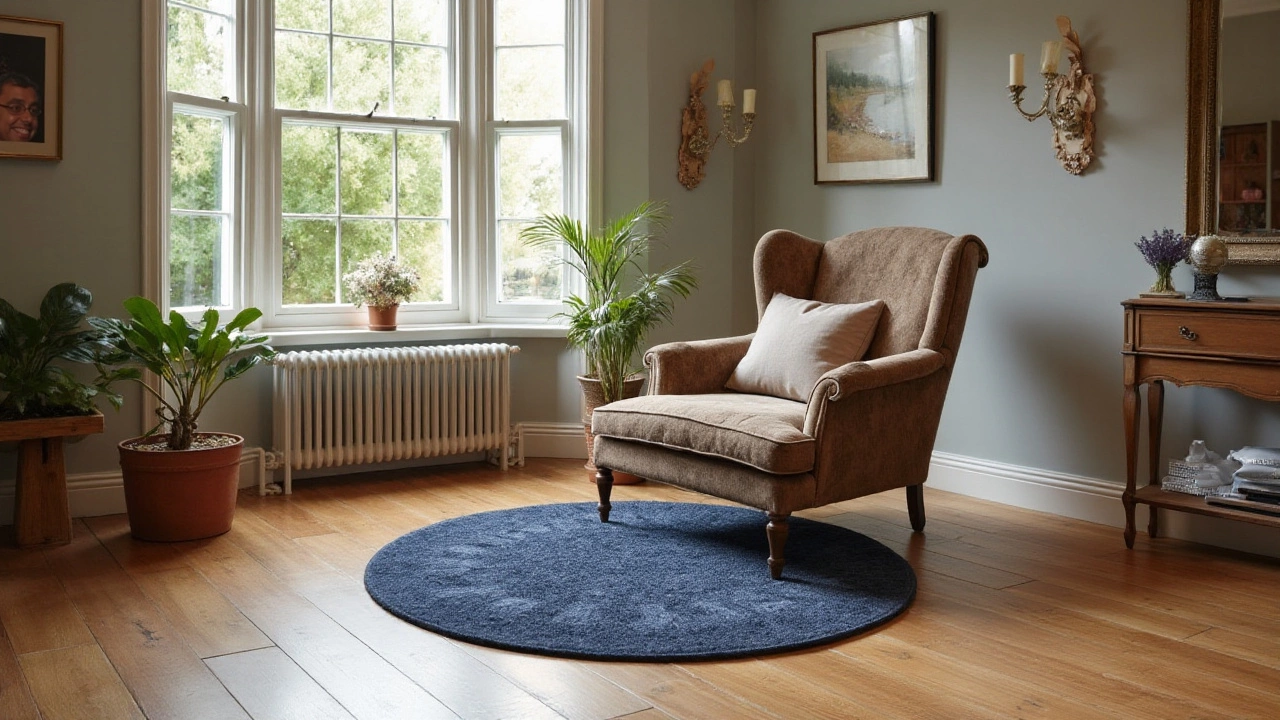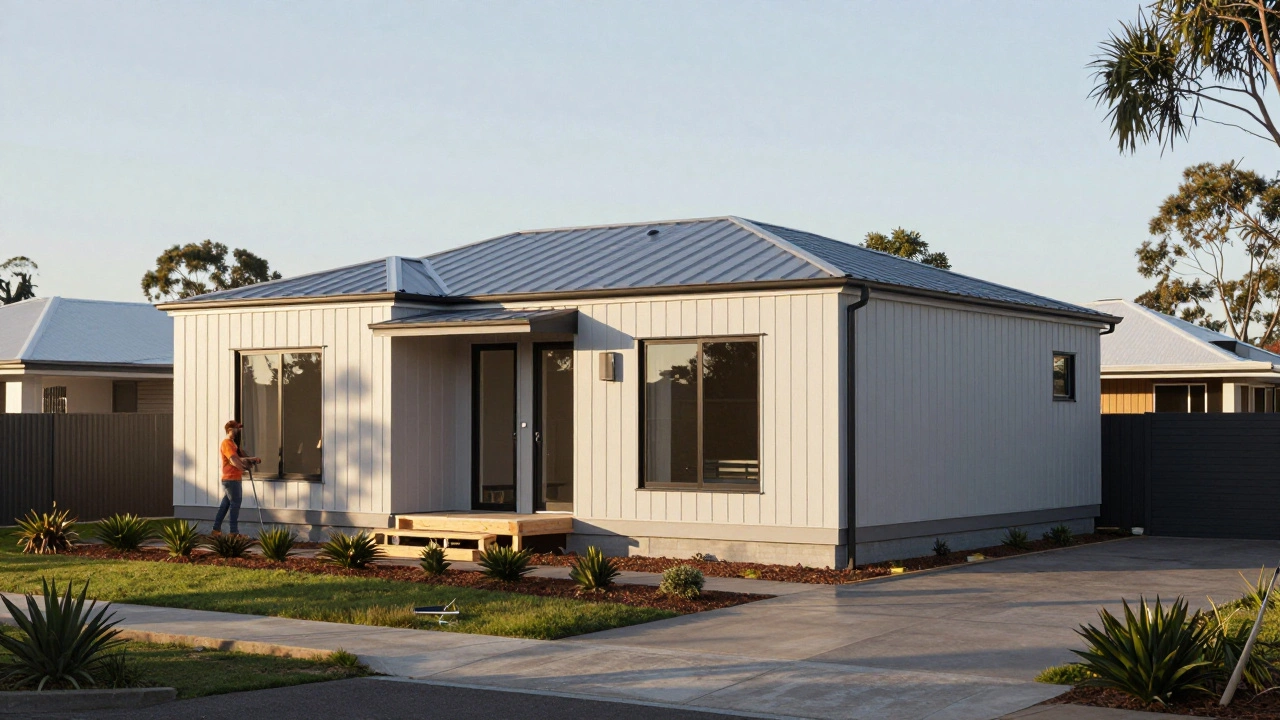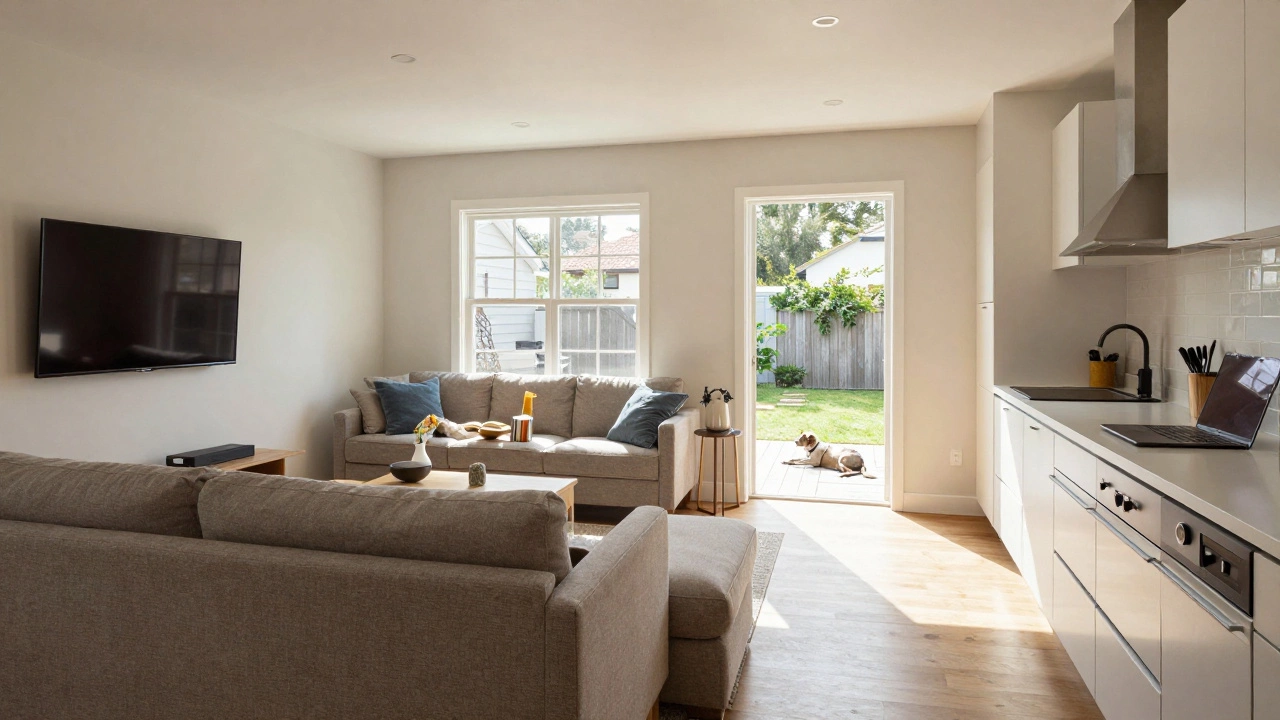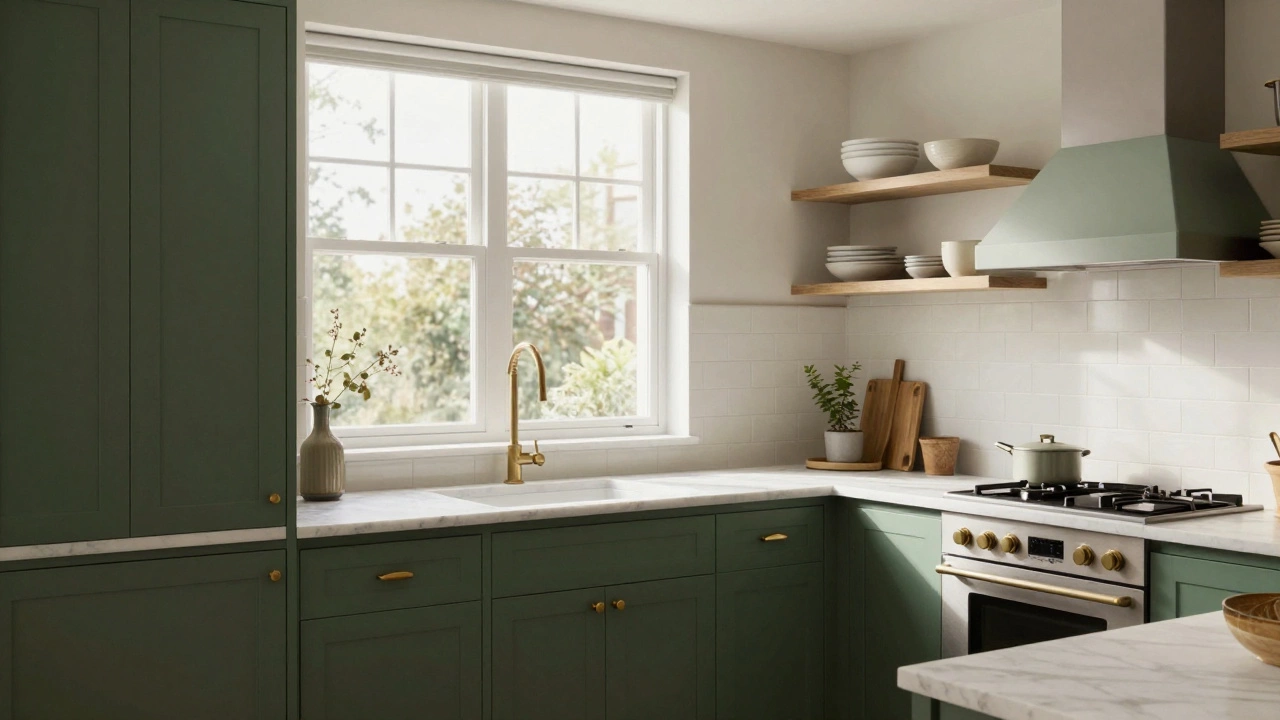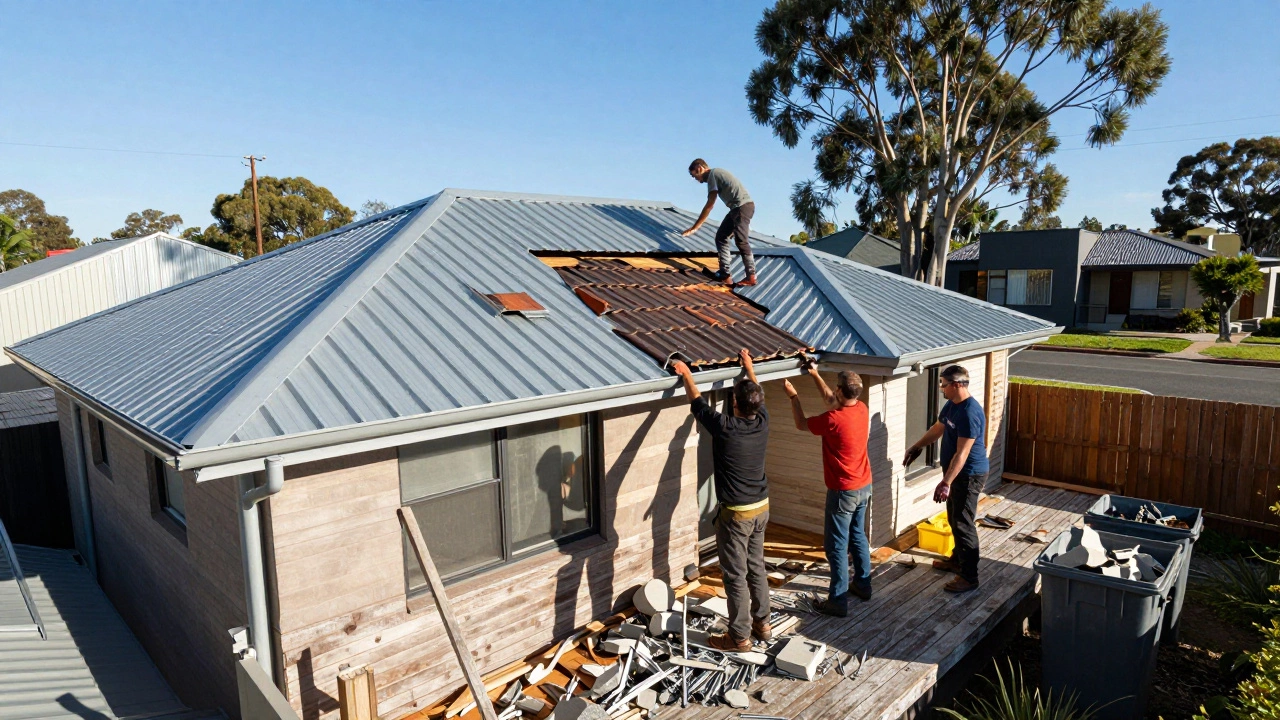Picking the right flooring for a new build can make or break how you feel about your place in a few years. Believe it or not, the stuff under your feet takes a daily beating—think muddy shoes, dropped snacks, or a zooming dog. And with new homes, you’ve got the freedom to pick what you want, so why settle for something that just looks good in a brochure?
Hardwood might scream 'luxury,' but it’s not always the obvious winner, especially if you’ve got wild kids or a clumsy roommate lugging around furniture. Tile keeps cool and shrugs off scratches, but have you ever tried standing barefoot on it in February? Not fun. Then there’s vinyl—it’s got a reputation for being cheap, but honestly, modern stuff can fool anybody unless they get down on their hands and knees.
You don’t want to be the person ripping up carpet or resurfacing floors only a couple of years after moving in. Deciding now, at the start, saves money and keeps your sanity. Let’s break down important things that get overlooked, like why certain floors tank resale value or what works with in-floor heating. That way, your new build doesn’t just look sharp right after move-in, but actually stays that way.
- Key Flooring Choices for New Homes
- What Matters Most: Durability, Comfort, and Cost
- Room-by-Room Flooring Recommendations
- Pro Tips for Getting Flooring Right the First Time
Key Flooring Choices for New Homes
If you’re building new, you’ve got more choices than ever for the best flooring. Each type has some real pros and cons—let’s break them down without any sugarcoating.
Hardwood is still a favorite, and it’s not just hype. Real wood floors look great and boost home value. Solid hardwood can be sanded and refinished down the road if it gets scuffed up. Big downside? It hates water and dogs with giant claws. If you’re putting it in the kitchen or an entryway where people slog in with wet boots, expect headaches. Also, price tags for hardwood are higher both for materials and installation.
Luxury vinyl plank (LVP) is the new hero for folks who want tough floors that survive kids, pets, and the occasional spill. Modern LVP can look like wood or stone and wears like armor. It’s often waterproof, which is a game-changer for bathrooms or basements. Plus, it’s easier on your wallet and feet—especially if you’re the one installing it DIY.
Tile always wins for wet zones. Kitchens, laundry rooms, and bathrooms thrive with tile. Ceramic and porcelain hold up to moisture, messes, and constant foot traffic. The colors and designs are endless, but tile gets cold and hard, so standing for long stretches isn’t comfy (think about a kitchen mat or underfloor heating if you go this route).
Let’s not forget carpet. It’s cozy and soft, which is perfect for bedrooms or media rooms where comfort rules. But carpet stains, it wears unevenly in busy spots, and it’s a magnet for dust and pet hair. Still, if budget is a crunch and you want quiet, carpet works—just expect to replace it more often than hard surfaces.
For a quick at-a-glance comparison, check this out:
| Flooring Type | Durability | Water Resistance | Ideal For | Avg. Cost Per Sq. Ft. |
|---|---|---|---|---|
| Hardwood | High (if maintained) | Low | Living, dining, bedrooms | $8 - $15 |
| Luxury Vinyl Plank | Very high | Waterproof | Anywhere (except sauna/steam rooms) | $2 - $7 |
| Tile (Ceramic/Porcelain) | Very high | Waterproof | Kitchens, baths, entryways | $3 - $10 |
| Carpet | Medium | Low | Bedrooms, living rooms | $1 - $5 |
New construction gives you the shot to actually plan for traffic, weather, and what your family will throw at the floor (sometimes literally). This is the time to weigh your options and pick what actually fits your life—not just what’s trendy on social media.
What Matters Most: Durability, Comfort, and Cost
Let’s talk about the three things no one can afford to ignore with best flooring in a new build: durability, comfort, and cost. You’ll hear people rave about some floors looking great or being “on trend,” but those don’t matter much if everything gets scratched, feels awful, or blows your budget before you’ve even moved in.
Durability really leads the pack here. Try thinking ahead: Are you someone who’s dragging chairs across the kitchen every day or do you have pets racing around? Hardwood stands up surprisingly well to almost anything except puddles and claws. Families with younger kids usually lean toward luxury vinyl plank (LVP) since it shrugs off water, pets, and forklifts of Legos. Ceramic and porcelain tile are tanks — just don’t drop anything heavy, or you’ll have a chip you can’t fix easily.
Comfort flies under the radar until that first winter morning. Tile looks slick but can feel ice-cold. If you love walking barefoot, carpet or high-quality vinyl will always feel more inviting. There’s also a big difference in how noisy rooms are with certain options. If every step echoes, dropping a rug on hardwood or laminate helps, or you can go with carpet in bedrooms for pure comfort without making the rest of the house feel like a cave.
Now, onto cost. Here’s where builders can get blindsided by flooring upgrades that snowball. Want some ballpark figures to compare?
| Flooring Type | Average Cost (Supply & Install, per sq ft) | Expected Lifespan (Years) |
|---|---|---|
| Hardwood | $8 - $15 | 20-100 (refinishable) |
| Luxury Vinyl Plank (LVP) | $3 - $7 | 15-25 |
| Laminate | $2 - $6 | 10-30 |
| Tile (Ceramic/Porcelain) | $5 - $12 | 25-50 |
| Carpet | $2 - $8 | 5-15 |
If you’re on a tight budget but want modern durability, luxury vinyl plank and laminate are straight-up lifesavers. Tile runs higher but is unbeatable for bathrooms and kitchens where the wet factor matters. Hardwood is the wallet-buster but lasts ages if you treat it right. Carpet comes with the lowest up-front price but usually needs swapping out before any of the others.
Weigh your must-haves against your budget and the kind of living you actually do. The right call is usually a mix—save the budget stuff for the bedrooms and splash out on something tough where shoes and spills never quit.
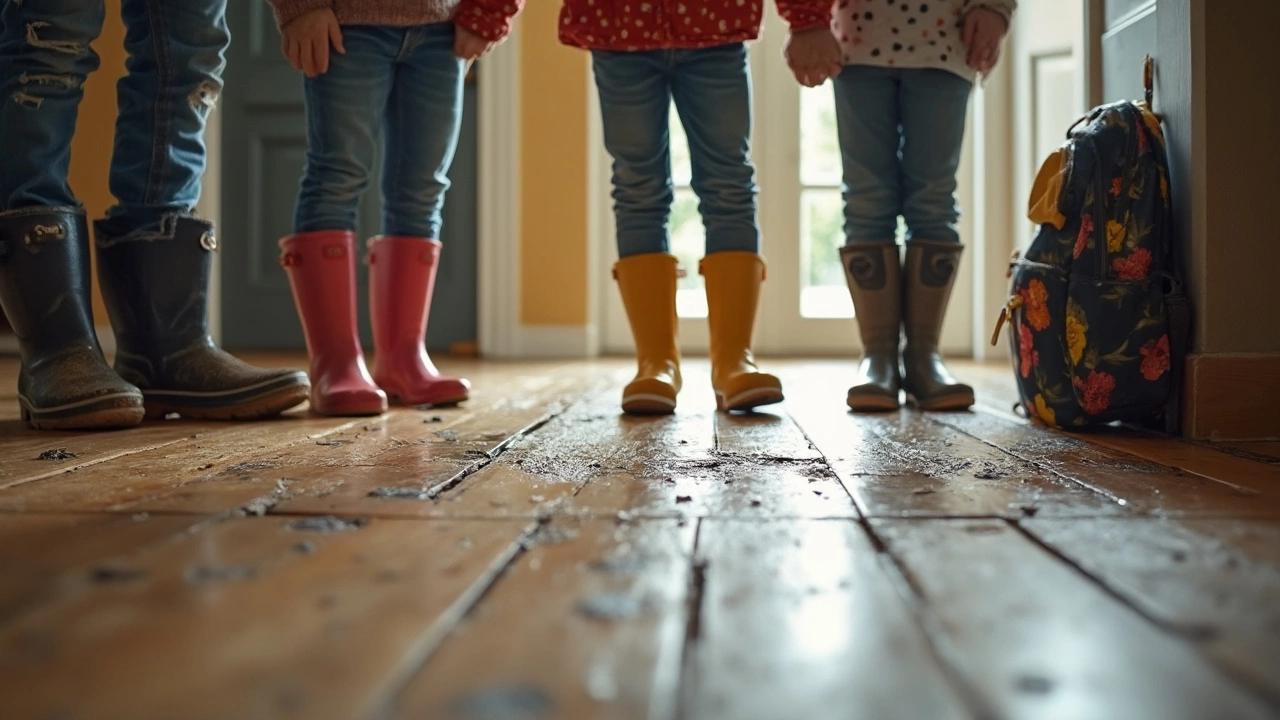
Room-by-Room Flooring Recommendations
Every room in your new build serves a different purpose, so your best flooring choice should match how you’ll actually use the space. Let’s walk through which floors work best where, and why.
Living Room: For most people, this is the hangout spot. If you want something that looks sharp and holds up to both movie nights and fancy gatherings, go for engineered hardwood or high-end vinyl plank. These both have a warm look but handle scuffs way better than old-school solid wood. Engineered options are less likely to warp if there’s a humidity swing—huge bonus if you're in a place with real seasons.
Kitchen: Kitchens are warzones—think spills, dropped knives, and furious pasta boils. Tile is the no-nonsense winner here. Porcelain is top of the pile because it barely scratches, resists water, and shrugs at hot pans. Some folks use luxury vinyl plank for its softer feel and grippiness, but beware: low-quality vinyl can stain if you drop tomato sauce and leave it for too long.
- Tip: Avoid hardwood in kitchens. Even with finish, water is its enemy.
- Bonus: Check for slip resistance, especially if you hate wearing shoes indoors.
Bedrooms: Here, comfort is king. Wall-to-wall carpet is making a weird comeback for bedrooms because it feels cozy, it’s a sound sponge, and, let’s be real, nobody wants cold toes at 7 a.m. If allergies bug you, though, stick with engineered wood or a cushy vinyl plank and toss down an area rug you can actually wash.
Bathrooms: Don’t mess around here—tile or waterproof vinyl are your only smart bets. Tile stays clean and handles pools of water. Heated tile is a splurge, but if you’ve ever stepped onto a cold bathroom floor in winter, you know it’s worth it. Never use hardwood or standard laminate here, unless you like replacing floors after a leak.
Laundry/Mudroom: Think durability and water resistance above all. Porcelain tile is your safest bet. Vinyl works if you want something less cold and tough underfoot. Just make sure the seams are sealed tight so water doesn’t sneak underneath.
Basement: There’s always a risk of moisture. Waterproof vinyl plank is a winner here—it won’t warp and most brands are mold-resistant. If you really want carpet, get the synthetic type that dries quick, but know you’ll have to cross your fingers against leaks.
| Room | Best Choice | Why It Works |
|---|---|---|
| Living Room | Engineered Hardwood, Vinyl Plank | Warmth, durability, easy care |
| Kitchen | Porcelain Tile | Waterproof, scratch-resistant, safe |
| Bedroom | Carpet, Engineered Wood | Comfort, warmth, noise reduction |
| Bathroom | Tile, Waterproof Vinyl | Handles water, easy to clean |
| Laundry/Mudroom | Porcelain Tile, Vinyl | Durable, moisture-resistant |
| Basement | Waterproof Vinyl Plank | Won’t warp, resists mold |
When you plan things room-by-room, you end up with floors that actually fit your life—not just what the showroom says is "in" this year. And you’ll dodge those "why did we pick this?" regrets down the road.
Pro Tips for Getting Flooring Right the First Time
There’s a lot more to picking the best flooring than you might think. It’s not just about what looks good—nobody wants to regret their decision every time they mop up spilled juice or let their dog inside on a rainy day. Here’s how savvy folks get it right the first time, before the dust settles in their brand-new home.
- Think lifestyle, not just looks. If you’ve got kids, pets, or anyone who lives rough and tumble, don’t pick fuzzy carpets or soft pine boards. Luxury vinyl or tile can take more hits and keep looking sharp.
- Match the room to the material. Don’t drop hardwood in a bathroom just because you love the look. Save it for bedrooms or lounges. Use tile or waterproof vinyl in kitchens, bathrooms, and laundry where spills happen.
- Pick materials that work with future changes. Want underfloor heat? Not all floors play nice with it. Tile and some luxury vinyls are top choices for radiant heat setups.
- Watch for resale value. Believe it or not, the National Association of Realtors found that homes with hardwood in main living areas can fetch up to 2.5% more at resale than places with full carpet.
- Order samples and actually live with them. Lay those samples where the sun hits, spill a bit of water, and walk around barefoot. Stuff can look totally different in store lighting.
- Budget in the hidden costs. Don’t ignore underlayment, transitions between rooms, or pro installation fees. These can stack up, sometimes 30% on top of just the material price.
If keeping clean is a non-negotiable for you, flooring type matters. Here’s a real comparison:
| Material | Average Cleaning Time (per week) | Spill Resistance |
|---|---|---|
| Carpet | 2 hours | Low |
| Laminate | 1 hour | Medium |
| Tile | 45 mins | High |
| Luxury Vinyl | 45 mins | High |
And let’s not skip the words from the pros. As Tom Silva from This Old House puts it:
“Buy the best quality you can afford and focus on rooms that get beat up the most. It’s way cheaper—and way less hassle—to do it right from the start than to fix it later.”
So, before you pull the trigger, check off these steps, be honest about how you live, and take time to compare actual samples at home. Your future feet will thank you.

